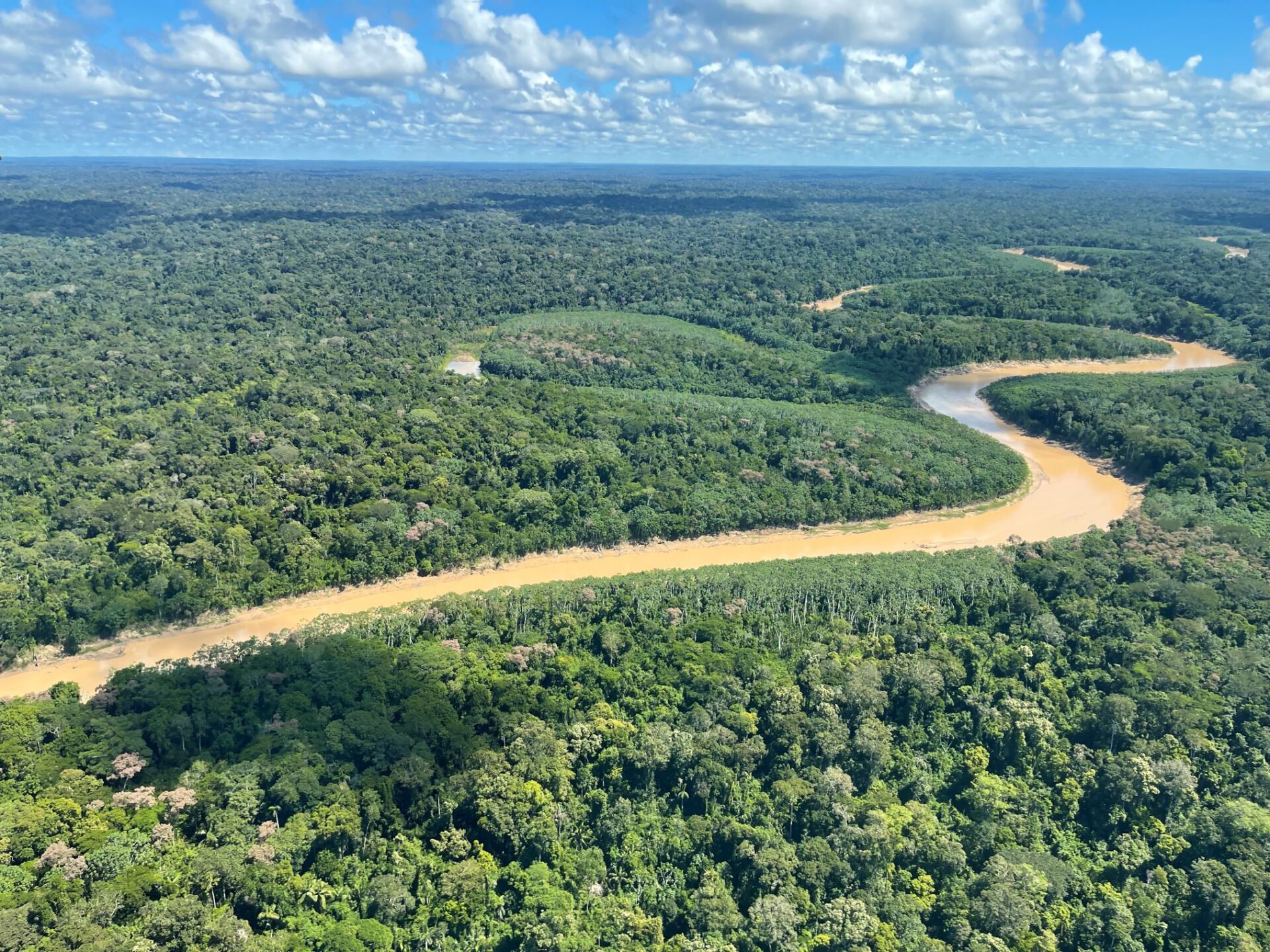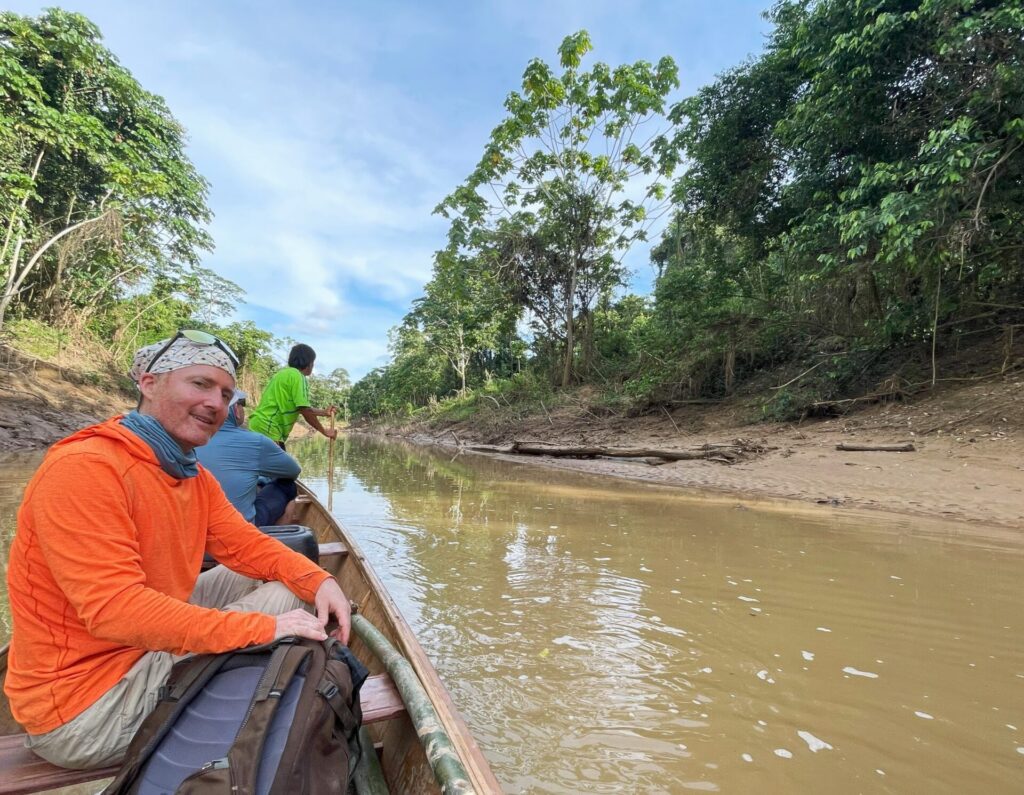
Our CEO, Joshua Tosteson, traveled to Peru’s Ucayali State to see the Amazon rainforest’s challenges firsthand. He found a fragile ecosystem threatened by expanding roads and illegal activities like logging and drug trade.
The single-engine plane landed on a makeshift airstrip deep in the village of Dulce Gloria deep in Peru’s Ucayali State, along the Yurua River in the Upper Amazon. Perched on the border with Brazil, the Yurua region is a gateway to some of the last Peruvian Amazonian tribes that have had minimal interaction with the outside world. And while this green forest – a critical carbon sink – breathes deeply, a silent threat looms beneath the canopy.
I traveled to Ucayali state to meet local communities and to see how some of the newly piloted conservation agreements are going. What I saw was both alarming and eye-opening.
An extensive network of small roads, invisible from satellite imagery, has been creeping deeper into the forest. These roads promise access to markets, but they also pave the way for loggers and illegal activities, such as the narco trade, to infiltrate the area.
Statistically significant deforestation might not yet be evident as you fly toward Yurua from Pucallpa (the capital city of Ucayali with a population of almost 330,000, a traditional center of logging activity), but the groundwork for large-scale logging has been laid. We must act before the inevitable wave of destruction begins.
This is where REDD+ (Reducing Emissions from Deforestation and Forest Degradation) projects and voluntary conservation agreements come in. These tools offer communities a viable alternative to deforestation. Communities can choose not to give way to loggers, who have delivered no benefits to these communities over decades of troubled engagement, but instead, partner with REDD+ projects that provide economic opportunities and support community-directed sustainable development. Communities want choices that allow them to preserve their way of life and protect their forests while prospering at the same time. REDD+ is offering just that.

Over the years, traditional culture and practices in many communities have been eroded due to the influence of loggers, missionaries, and others. I was deeply moved to see that people in the Yurua area are now seeking to reclaim their traditions, partly through the support of the voluntary conservation agreements.
One of the Yaminawa community leaders, Maximo Perez has created a new organization called “FINDY” (Farmacia Indigena Natural de Yurua), and told me, “I’m working to recover our traditional medicine and the wisdom found in our plants. [A standing forest] is an opportunity to return to our traditions.”
We heard similar stories in each village we visited. While it’s a long path still to a REDD+ project here, through the first step of the conservation agreements the communities of the Yurua region have seen that there is an option available for them to achieve their development goals through conservation, and they are eager to explore this further.
It’s critical to remember that whilst arguments about “baselines” and other technical minutiae are ongoing, the forces of destruction are taking advantage of the market’s paralysis and moving swiftly – and forests are being torn down. This is why we believe that REDD+ is not just a solution; it is a necessity.
We must act now, decisively, before it is too late. The forest and its people depend on it. This is a call to action, an appeal for immediate and sustained efforts to protect one of the world’s most vital ecosystems.
Right now, REDD+ is the only mechanism we have to funnel funds to threatened forest communities who autonomously decide how to use these. On June 5th, World Environment Day, we have to collectively ask ourselves: what active steps are we actually taking to protect our environment before it’s too late?